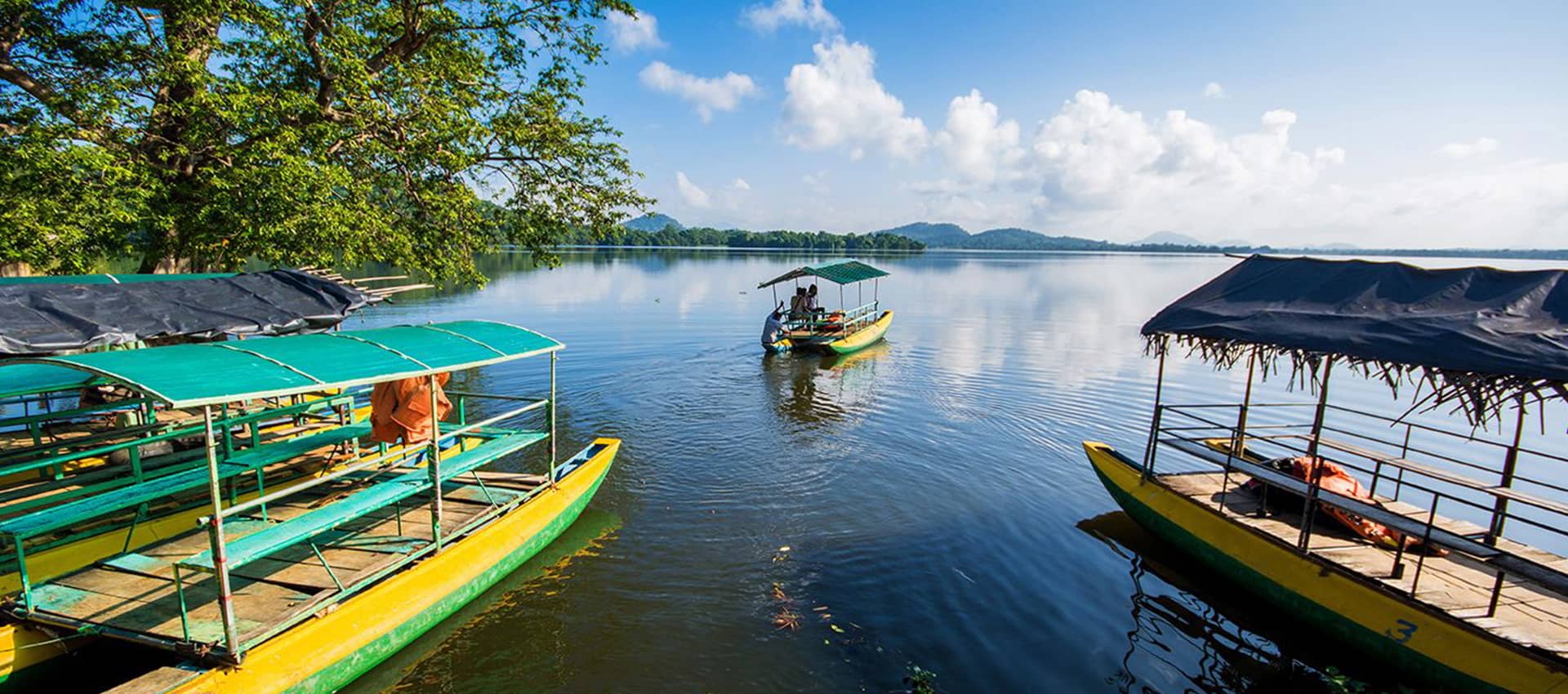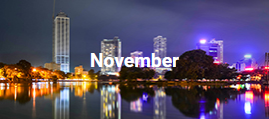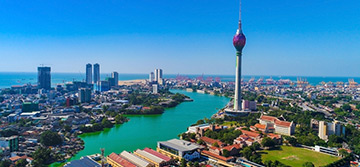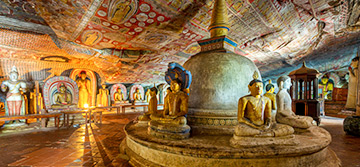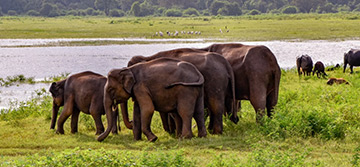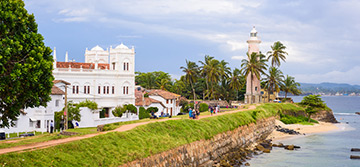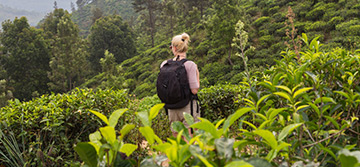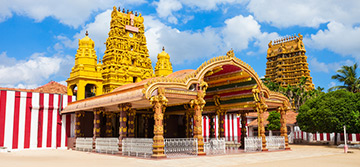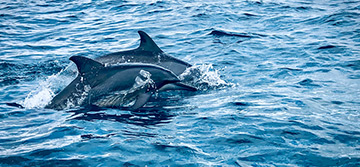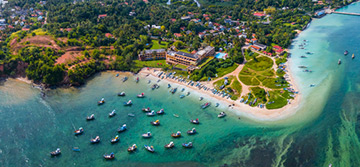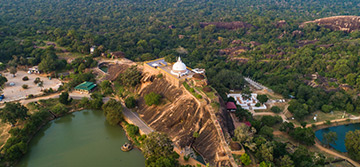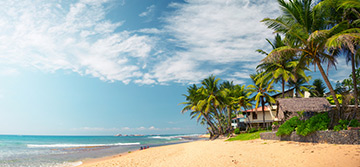The best time of year to travel to Sri LankaOur comprehensive guide to weather in Sri Lanka will tell you all you need to know when you are planning your holiday to Sri Lanka. We reveal the best time to visit Sri Lanka by enabling you to compare the climate not just month by month, but region by region. With the right information at your fingertips, you can plan an enjoyable holiday at virtually any time of the year. With our guidance, Sri Lanka really is an all-year-round destination.
Sri Lanka is a perfect destination to escape a European winter - and its holiday season is at its peak from December to April. But Sri Lanka’s tropical climate generally offers warmth and sunshine somewhere on the island throughout the year. A position just north of the equator ensures pretty consistent temperatures throughout the year.
December to March are the best time to visit the west and coast and south-central highlands, while the east coast has Sri Lanka's best weather between May and September. March and August offer consistently settled weather across the bulk of the island.
Whatever time of year you travel, the Sri Lanka climate ensures that with skill and knowledge you can arrange a satisfying itinerary to chase the best of the weather. Check out our unrivalled month-by-month guides and regional guides to weather in Sri Lanka to discover the best times to visit Sri Lanka.
In Colombo and the west coast, noon temperatures range between 28-32C and peak in April before the seasonal rains. It can be slightly hotter in the Cultural Triangle and on the east coast. Kandy's daytime average is around 24C and average temperatures further into in the hills range from a daytime peak of 23C to a nightly low of around 9C.
Humidity ranges between 70-90 percent in Colombo, lower in the highlands and cultural triangle. Ocean breezes also moderate temperatures on the coast.
Rainfall is becoming increasingly unpredictable. Sri Lanka averages about 240cms a year, which explains its beauty, but much of the rain falls in short, heavy bursts, often at night, and figures vary widely from region to region. The north and east of the island represent the Dry Zone, with the far north-west and south-east the driest of all. The western slopes of the central highlands, inland from the coast, are the wettest.
Sri Lanka monsoons
Sri Lanka lies 400 miles north of the equator and is affected by two monsoon seasons caused by winds originating from the Indian Ocean and the Bay of Bengal. The monsoon weather patterns in Sri Lanka ensure that some coastal waters are always in season for swimming, snorkelling, and diving.
The main south-west monsoon (Yala) originates from the Indian Ocean and brings most rain to Colombo, the south, and west coasts and during May/June.
The weaker north-east monsoon (Maha) brings rain from the Bay of Bengal and affects the far north and east between December and February. In this dry zone, the monsoon makes up the vast majority of its rain for the year.
There are also inter-monsoon rains, usually in October and early November when heavy rain is possible anywhere across the island.
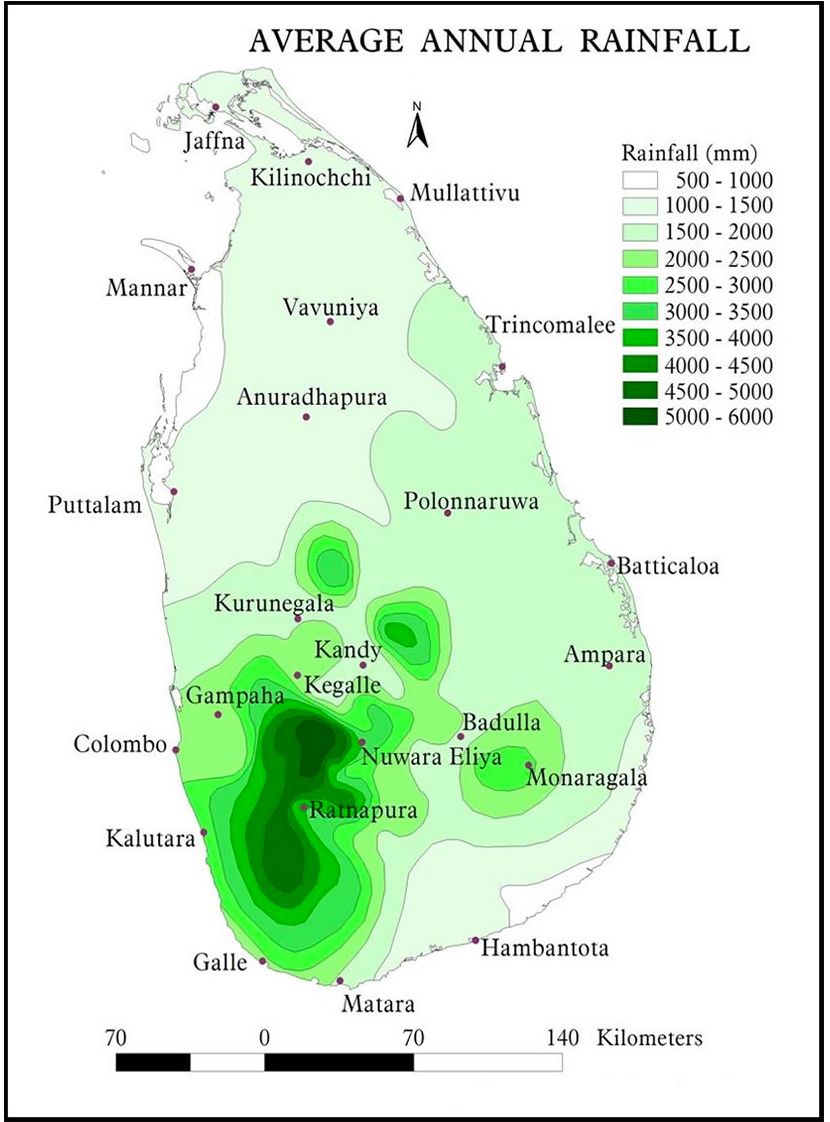
Useful Links
Department of Meteorology Sri Lanka - www.meteo.gov.lk
Latest weather info from government’s meteorology department.
Sri Lanka weather month by month
Sri Lanka weather region by region
Our comprehensive guide to weather in Sri Lanka will tell you all you need to know when you are planning your holiday to Sri Lanka. We reveal the best time to visit Sri Lanka by enabling you to compare the climate not just month by month, but region by region. With the right information at your fingertips, you can plan an enjoyable holiday at virtually any time of the year. With our guidance, Sri Lanka really is an all-year-round destination.
Sri Lanka is a perfect destination to escape a European winter - and its holiday season is at its peak from December to April. But Sri Lanka’s tropical climate generally offers warmth and sunshine somewhere on the island throughout the year. A position just north of the equator ensures pretty consistent temperatures throughout the year.
December to March are the best time to visit the west and coast and south-central highlands, while the east coast has Sri Lanka's best weather between May and September. March and August offer consistently settled weather across the bulk of the island.
Whatever time of year you travel, the Sri Lanka climate ensures that with skill and knowledge you can arrange a satisfying itinerary to chase the best of the weather. Check out our unrivalled month-by-month guides and regional guides to weather in Sri Lanka to discover the best times to visit Sri Lanka.
In Colombo and the west coast, noon temperatures range between 28-32C and peak in April before the seasonal rains. It can be slightly hotter in the Cultural Triangle and on the east coast. Kandy's daytime average is around 24C and average temperatures further into in the hills range from a daytime peak of 23C to a nightly low of around 9C.
Humidity ranges between 70-90 percent in Colombo, lower in the highlands and cultural triangle. Ocean breezes also moderate temperatures on the coast.
Rainfall is becoming increasingly unpredictable. Sri Lanka averages about 240cms a year, which explains its beauty, but much of the rain falls in short, heavy bursts, often at night, and figures vary widely from region to region. The north and east of the island represent the Dry Zone, with the far north-west and south-east the driest of all. The western slopes of the central highlands, inland from the coast, are the wettest.
Sri Lanka lies 400 miles north of the equator and is affected by two monsoon seasons caused by winds originating from the Indian Ocean and the Bay of Bengal. The monsoon weather patterns in Sri Lanka ensure that some coastal waters are always in season for swimming, snorkelling, and diving.
The main south-west monsoon (Yala) originates from the Indian Ocean and brings most rain to Colombo, the south, and west coasts and during May/June.
The weaker north-east monsoon (Maha) brings rain from the Bay of Bengal and affects the far north and east between December and February. In this dry zone, the monsoon makes up the vast majority of its rain for the year.
There are also inter-monsoon rains, usually in October and early November when heavy rain is possible anywhere across the island.

Department of Meteorology Sri Lanka - www.meteo.gov.lk
Latest weather info from government’s meteorology department.
